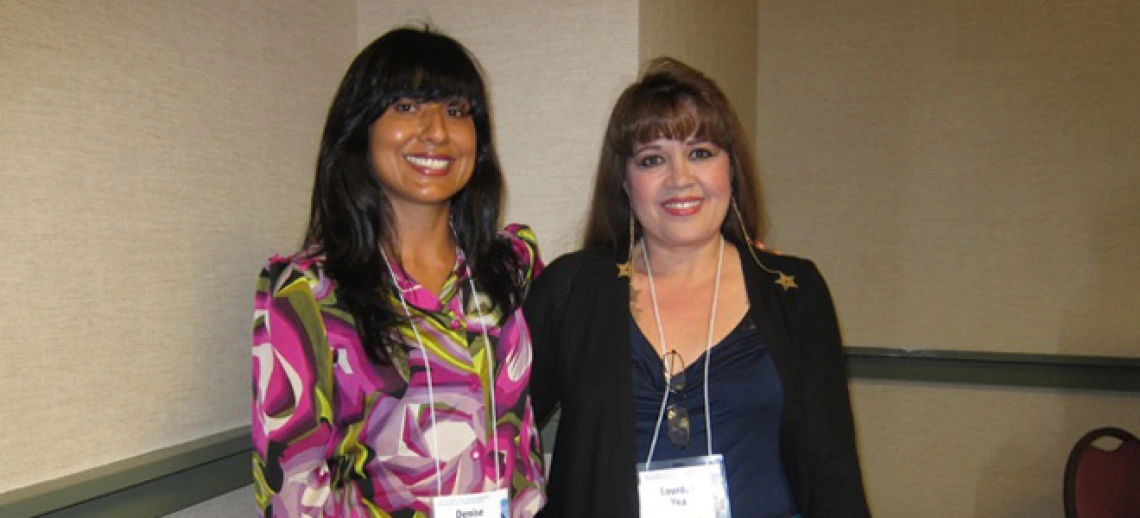Community Engagement Core Presents at Pollution Prevention Conference

 Denise Moreno Ramírez, Community Engagement Coordinator for the University of Arizona Superfund Research Program (UA SRP) recently gave a presentation at the 2012 Western Sustainability and Pollution Prevention Network (WSPPN) Conference. She was joined by Lourdes Vea, a community health worker with the Sonora Environmental Research Institute, Inc. (SERI). Together, they presented their work on “Pollution Prevention through Community Participation.”
Denise Moreno Ramírez, Community Engagement Coordinator for the University of Arizona Superfund Research Program (UA SRP) recently gave a presentation at the 2012 Western Sustainability and Pollution Prevention Network (WSPPN) Conference. She was joined by Lourdes Vea, a community health worker with the Sonora Environmental Research Institute, Inc. (SERI). Together, they presented their work on “Pollution Prevention through Community Participation.”
The UA SRP, UA Department of Atmospheric Science, and Dean Carter Binational Center for Environmental Health Sciences have been collaborating with SERI since 2008 to implement a pollution prevention (P2) project targeting Hispanic small business owners in southern metropolitan Tucson. This project was leveraged from our SRP Community Engagement Core. Measurable results include the creation of community health worker P2 training courses, small business outreach activities, industry-specific P2 workshops, and the development of community leaders. Highlights of accomplishments from the P2 grant include a well-attended printing industry workshop and nail/beauty salon training, as well as news coverage of the events.
The 2012 WSPPN Conference was held in May in Sacramento, CA. The conference featured 3 tracks, Used Oil, Household Hazardous Waste, and Pollution Prevention. Ms. Moreno Ramírez and Ms. Vea provided a case study of their successful outreach program to a broad audience comprised of members from industry, governmental agencies, and nonprofit organizations. The duo was part of a larger panel discussion entitled, “Hitting the Mark with Community Outreach: Tales from the Field,” moderated by John Katz of the US EPA Region 9 Office of Pollution Prevention. The objective of the panel was to provide audience members with tools to develop effective tailored communication and motivate behavior changes in targeted stakeholders. Ms. Moreno Ramírez and Ms. Vea gave a well-received presentation, providing fruitful examples to members of the audience striving to execute such a P2 program at the grassroots level. Interest generated at the conference has led to additional invitations to present their work at future events.

